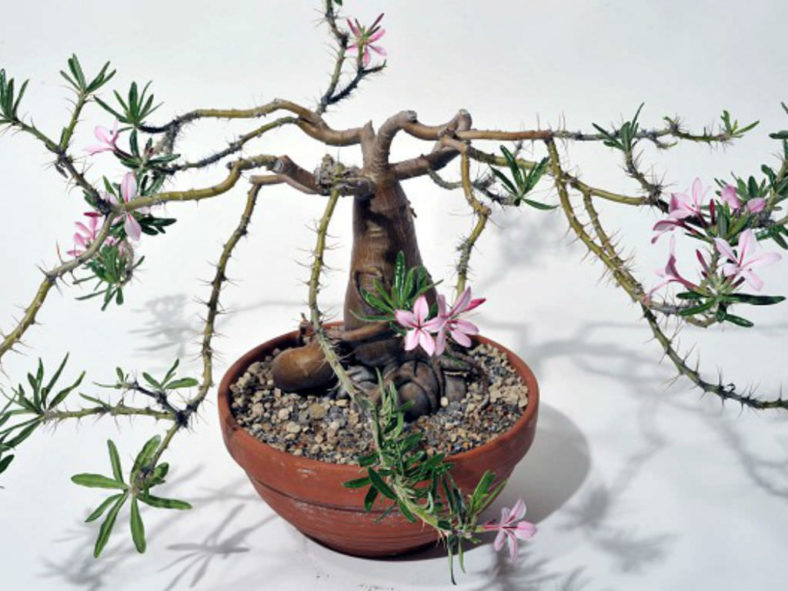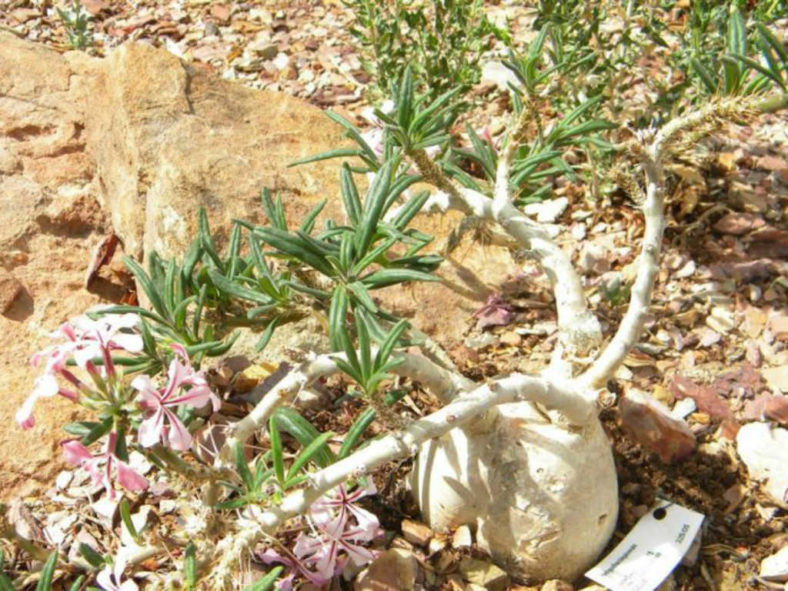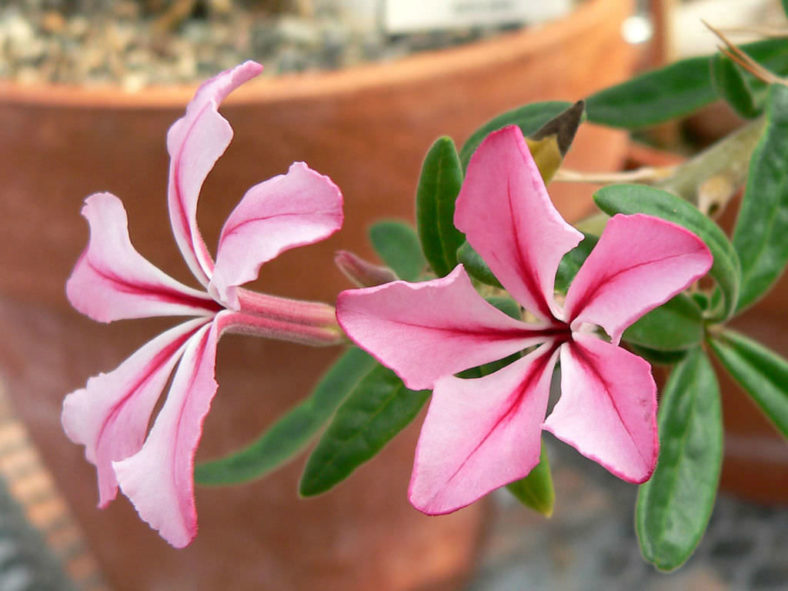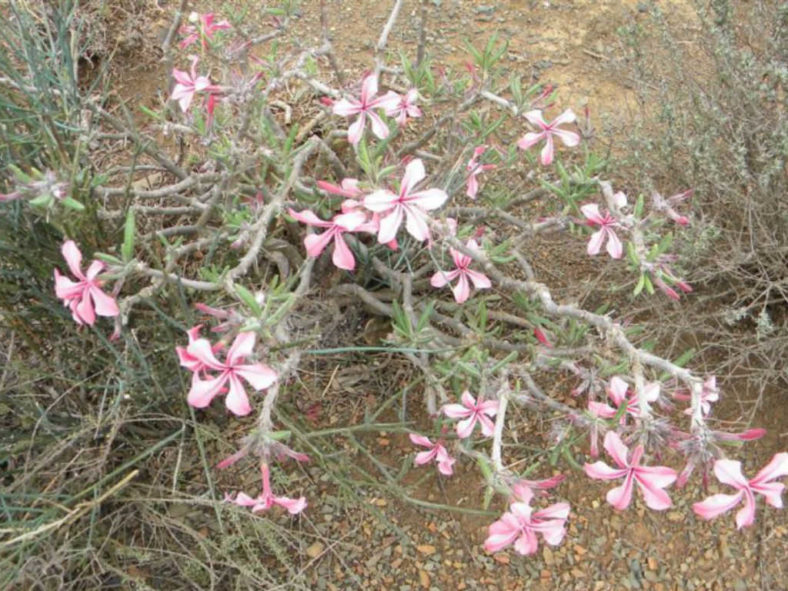Scientific Name
Pachypodium succulentum (L. f.) Sweet
Synonym(s)
Echites succulentus
Scientific Classification
Family: Apocynaceae
Subfamily: Apocynoideae
Tribe: Malouetieae
Genus: Pachypodium
Origin
The native range of Pachypodium succulentum is from Oudtshoorn and Karoo to Eastern Cape and Nothern Cape in South Africa. It occurs in arid places, usually among rocks.
Description
Pachypodium succulentum is a succulent shrub with a large tuberous stem bearing several slender, somewhat twisted branches with brownish spines, usually in spreading pairs, and fleshy, green to brownish leaves scattered along the branches and clustered towards the ends. It can grow up to 2 feet (60 cm) tall. The tuber can reach up to 6 inches (15 cm) in diameter, with most of its volume lying below the ground level. The branches are erect, simple or sparingly branched and can grow up to 2 feet (60 cm) long and 0.5 inches (1.3 cm) in diameter. As they age, the young branches are grey tomentellous, becoming glabrous with wrinkled brownish bark. The lateral branches are usually very much shorter than the central ones. The leaves are linear to linear-lanceolate and measure up to 1.8 inches (4.5 cm) long and up to 0.3 (0.8 cm) wide.
The inflorescence is a thyrse with 5-merous flowers on short pedicels, which elongate somewhat when fruiting. The flowers are crimson or in shades of pink, rarely white, and usually with a darker midstripe on the corolla lobes. They appear in spring and early summer.

Hardiness
USDA hardiness zones 9b to 11b: from 25 °F (−3.9 °C) to 50 °F (+10 °C).
How to Grow and Care
The attractive flowers of Pachypodiums and the intriguing shapes of their swollen stems make them desirable for any garden. However, they are unsuitable for cold or damp gardens and very sensitive to frost. Therefore, if planted in a sunny garden that experiences occasional frost, they should be given a warm, sheltered position.
They make good accent plants in a rock garden, especially when grouped with other caudiciform succulent plants. All need full sun, lots of water (except during the dormant phase), and must have good drainage.
Almost all species are surprisingly adaptable to cultivation, changing their growing season when grown in the northern hemisphere.
These plants like ample light and grow best in full sun. Partial shade is tolerated but may discourage flowering. When grown in a glasshouse, ventilation is important. Abundant water is required during the growing season, depending on the species and the specimen's size. Allow the soil to dry out before adding more water.
Learn more at How to Grow and Care for Pachypodium.
Links
- Back to genus Pachypodium
- Succupedia: Browse succulents by Scientific Name, Common Name, Genus, Family, USDA Hardiness Zone, Origin, or cacti by Genus
Photo Gallery
Click on a photo to see a larger version.


